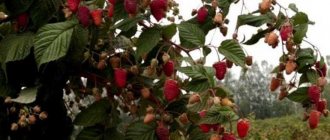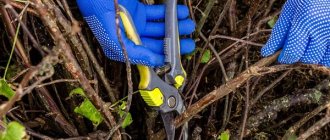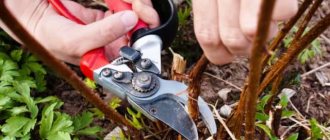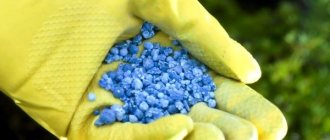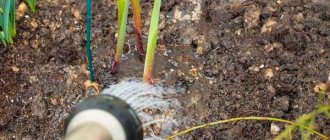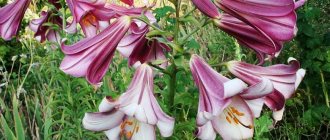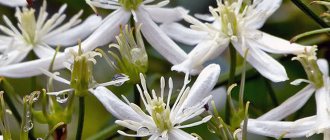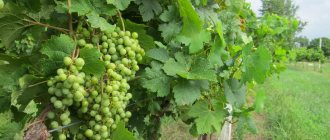Sweet juicy strawberries on the table are a symbol of summer. Its aroma beckons, and the juicy and sweet berries just beg to be put into your mouth. But in order for the strawberry plantation to produce the maximum harvest from year to year, it needs to be properly cared for and prepared for winter.
Frosts can be destructive for bushes. The reason for this is improper preparation for winter. Let's figure out how to properly prepare strawberries for the coming cold weather and what needs to be done first.
Fertilizing strawberries in the fall is the key to a successful winter
By September, even the young animals that have grown from the whiskers are already quite developed, but there is no need to leave everything to grow further. Carefully inspect the plantation. It is better to remove damaged, weak and old plants. Young seedlings can be transplanted in their place. Of course, if you grow strawberries for no more than 4 years in one place, this is not required.
In the first half of September, fertilize. Supporters of organic fertilizers can use nettle infusion, a 10% liquid mixture of mullein and ash, and bird droppings infusion. Even with such fertilizers you need to be careful. Do not exceed the norm and make the solution saturated.
Complex mineral fertilizers are not inferior in nutritional value to organic fertilizers, they are more convenient to use, but they do not improve the soil structure and are not a breeding ground for beneficial soil bacteria. The choice is yours.
Preparing strawberries for winter
It is clear that berry bushes need to be prepared for frost, but before that they are treated against diseases and harmful organisms. For these purposes, Bordeaux mixture is used, which is intended for this purpose. But you can get by with an antiseptic like brilliant green. It is diluted in water (12 drops per 10 liters).
To improve the functioning of the strawberry immune system, it is possible to use biological agents that not only prevent the appearance of harmful insects, but also nourish the soil, improving its structure. Such drugs include Fitosporin, Zircon, Actofit and others.
After this, you can prepare the beds for winter; of course, snow is the best shelter from the cold for strawberry bushes, but sometimes winters are snowless, and it’s worth insuring your plants.
Gardeners prefer different types of coverings:
- special nonwoven materials, preferably with a density of at least 60 g per square meter;
- dry leaves, however, they tend to rot, after which they are difficult to remove from the bushes;
- sawdust and straw are not very reliable protection, and you will need to additionally use film;
- coniferous spruce branches, but this remedy is not perfect, since fallen needles that end up on the ground and create heat can lead to the proliferation of pathogenic microorganisms.
According to the experience of farmers, the most effective are specialized fabrics that retain air access, maintain heat, and protect the crop from rodents, but for such a shelter you will have to build a frame to tension the fabric. It is also worth remembering that it is necessary to cover not only the plants, but also the soil between the rows.
By understanding how to care for strawberries in the fall, you can avoid many mistakes that cause crop failure and even the death of a strawberry plantation. Therefore, it is necessary to comply with all requirements relating to this issue and take into account the peculiarities of the climatic conditions of your region.
Thank you for your interest in the article “How to care for strawberries in the fall.” If you found it useful, please do the following:
All the best!
Autumn watering of strawberries
Strawberries do not tolerate drought well, so do not refuse to water after harvesting. If precipitation is rare, watering is necessary once a week. In the southern regions, extreme heat is possible even in September, so it is better to water at least twice a week. Check soil moisture. It should not be too damp, as this can cause root rot. Dry soil does not allow strawberry bushes to become sufficiently strong, which significantly reduces winter hardiness. Stop watering when persistent cold weather sets in. For the northern regions this is the second ten days of October; in the south of the country this period begins much later.
What is the peculiarity of remontant varieties?
The first fruiting of these varieties is not abundant. Gardeners harvest the main harvest in late July - early August (applicable for central Russia). But if care is provided incorrectly, re-blooming will be poor.
If there are varieties on the site that bear fruit once per season, the problem can be solved very simply. It is enough to abandon the early harvest of the remontant variety in favor of the late one. To do this, the flowers of the plant are deliberately cut off.
For reference! Remontability is the ability of a variety to bear fruit several times during one season. They produce fruits not only on the main rosette, but also on the tendrils.
Gardeners say that such varieties require more attention than ordinary varieties. They need frequent watering and fertilizing required for full growth and the formation of a massive ovary. That is why, to increase productivity, you must follow all the rules of care; they will help make cultivation more productive.
Pruning strawberries in autumn
There is no consensus on whether strawberries should be pruned for the winter. Some fear that this will greatly weaken the plants, others believe that pruning makes it possible to destroy pests and fungal spores that remain on the leaves for the winter.
If you decide to trim all the leaves, do it at the end of October. The plants are already in an inhibited state; they will not grow new leaves, and therefore will not expend energy on growing green mass. Be careful with the heart - do not cut off the central bud along with the foliage.
If you decide not to prune, remove all lower, damaged and defective leaves. Any spots can be the source of a dangerous disease. Ruthlessly cut off everything except the smooth green leaves, leaving stubs of 2-3 cm. Cut out the flower stalks completely - in the fall they only weaken the plants. Do not leave cut greens in the garden beds. It can be placed in a compost heap or burned.
How to properly care for remontant garden strawberries?
By and large, varieties of remontant strawberries cannot be called capricious; they are all quite unpretentious, but they still have their own subtleties in care. For example, everyone knows that modern large-fruited varieties of remontant strawberries can form berries weighing from 65 to 90 grams or more. Naturally, this will most likely lead to fairly rapid depletion of the soil and the need to apply additional fertilizers. This may be why a number of gardeners, contrary to general opinion, advise removing the very first spring flower stalks.
Then the second harvest of remontant strawberries, firstly, will be much earlier than expected, therefore, the plants will prepare for winter without human intervention. Secondly, the berries will be tastier and larger. Sometimes the total harvest after such a simple technique even exceeds two total harvests or an all-season harvest for remontant varieties of a different type.
Caring for remontant garden strawberries includes strictly mandatory steps - this is indispensable watering (the plants must be provided with plenty of moisture), fertilizer (everything is good here in moderation, but the plants should not suffer from a deficiency of one or another element), loosening the soil (after each watering and rain to avoid the formation of a soil crust when air and water exchange is disrupted), mulching the beds (after each watering, as it inhibits the growth of weeds and the formation of a soil crust), weed control (especially wheatgrass - the most malicious competitor of crops) , destruction of pests and diseases (at the earliest stages of their manifestation), pruning bushes (a specific procedure for remontant strawberries) and, finally, preparation for winter (an important stage in the life of remontant garden strawberries).
Important ! Gardeners who have been through fire and water recommend that you always mulch the beds with remontant garden strawberries, because the root system of this berry crop, unlike the common garden strawberry, is located high, and the plants very often suffer from a banal lack of moisture. To save irrigation water, you need to use mulch almost immediately after watering (and it is better to water with water at room temperature and in the evening). The mulch can be spruce needles, sawdust, straw, humus, hay, or ordinary mown grass. In addition to protecting against moisture loss, mulch will also protect the berries from being splashed with soil during rain and watering and will inhibit the growth of weeds (don’t forget about them too!).
Caring for remontant strawberries. © Aliceson
Autumn treatment of strawberries against diseases and pests
Early September is the best time to process strawberries.
- If you did not have time to weed the bed in time, use Lenacil. It is designed specifically for killing weeds on strawberries. Regular weeding can damage the roots, which is extremely undesirable before the start of the cold season.
- Fitosporin helps to cope with diseases. Bacillus subtilis in its composition suppresses the growth of pathogenic flora.
- To kill insects, use any preparation, such as Iskra, Inta-CM and the like.
Strictly follow the instructions for use to avoid burning delicate plants. Keep a break of 7-10 days between treatments by any means and fertilizing. Strawberries need this time to overcome stress.
How to prepare strawberries for winter and when to do it
Preparing strawberries for winter includes several sequential works:
- cleaning beds from weeds,
- trimming leaves and tendrils,
- combating diseases and various pests using a fungicide solution,
- feeding,
- watering,
- loosening the earth,
- shelter.
Before the moment of sheltering, the strawberry plantation is watered deeply, and the row spacing is loosened. Moisture prevents the soil from quickly freezing and thawing, thereby protecting the roots from unnecessary stress. Loosening enriches the soil with air, which gives plants more strength to survive the cold winter.
Watering and loosening should not be done long before the autumn cold, since then the strawberries will not be properly hardened and will have time to “steam” from the temporary warming. These preparatory work begins when the thermometer drops below zero for several days, day and night. A week after the preparatory work, you can start covering the strawberries.
Mulching - for insulating berry plantations
Nature itself came up with the best winter blanket for strawberries. But frost can strike before a sufficient layer of snow falls. Varieties for which possible negative temperatures in your climate are extremely permissible are especially sensitive to frost. Typically, high-yielding remontant and large-fruited varieties are considered particularly sensitive to frost. But don’t rush to mulch your strawberries too early; autumn frosts will help harden the plants.
The optimal mulch is dry pine, spruce, and fir needles. The needles slightly acidify the soil, but this is not a problem for strawberries. A layer of 4-7 cm will help preserve your favorite variety.
If you do not have the opportunity to collect pine litter, use any sawdust, shavings, peat, plant debris, or chopped straw. But in this case, the mulch will need to be treated with drugs that can repel rodents. If you have black cherry growing nearby, add its leaves to the mulch. They are great at repelling mice. You need to make a shelter with the onset of persistent cold weather.
When to prune strawberries
If strawberries are not pruned in the fall, they may lose some of their foliage during the cold period. In a snowless winter, even mulch will not protect strawberries. In March, as soon as the bed dries out from the melted snow, you will find a mass of rotten, damaged, rotted or fungal-infected leaves that need to be carefully removed, being careful not to touch healthy leaves and buds.
In the fall, strawberry beds are cleaned of overgrown tendrils, diseased leaves and unnecessary children, but many believe that autumn pruning is harmful to the crop, since after it the bushes do not winter well, and in severe frosts they may die.
If you nevertheless decide to prune in the fall, then do it not just before the onset of frost, and remove only dry, discolored and damaged leaves, and it is better not to touch the core of the bush. Collect plant debris and mulch the surface with dry grass, peat, straw, sawdust or spruce needles.
- Potatoes: planting tubers in spring - how and when
Mulched strawberry bush
But it is most reasonable to prune immediately after fruiting: before the onset of autumn, the strawberry bushes will have time to grow new greenery, lay flower buds, accumulate nutrition and be able to withstand even a harsh winter well.
Features of caring for strawberries in autumn
Every year, care for this crop in the autumn period is carried out according to a single algorithm of actions and consists of the following stages:
- Thorough weeding of the beds, which consists not only of eliminating the external parts of the weeds, but also uprooting their root system to prevent re-growth.
- External inspection of all bushes, which is aimed at detecting diseased, blackened, insect-damaged or simply weak leaves. All of them must be cut off, after which it is recommended to burn them to prevent the possible spread of infection.
- If necessary, treatment against parasites or diseases is carried out.
- Carrying out autumn rejuvenation of the garden bed by replacing old bushes with young seedlings. Carried out only if necessary, the main symptom is a decrease in harvest volumes and foliage turning dark red.
- Applying fertilizers to the soil in accordance with technology.
- Organizing shelter for bushes for the winter to protect them from the approaching cold weather.
Some of the listed stages require more detailed consideration; their detailed description will be given below in the article.
How to properly cover strawberries from frost for the winter
The method of shelter depends not only on the region where strawberries are grown, but also on other factors. It is necessary to additionally take into account the age of the bushes and the planting method.
Adult
Mature plants, as a rule, are quite strong enough to successfully survive the winter. The main thing is to build the shelter on time and not be late with the lines. To preserve developed bushes, it is enough to cover the growth point, which is the most vulnerable. In those regions where there is a lot of snow in winter and there are no extremely low temperatures, many do not use additional shelter at all or use light preventive insulation.
Planted in autumn
Strawberries planted in the fall focus all their efforts on rooting and adaptation in the soil. Wintering can become an additional load that berry bushes cannot cope with. To help plants survive the winter, it is better to mulch them on the eve of frost with hay, straw, lawn grass, and stems of annuals.
In light frost, such a shelter will be enough to protect the roots and above-ground parts from freezing, and later the bushes will be additionally covered with snow. In the spring, you will need to inspect the beds and, if necessary, remove some of the mulch; the remaining part of the rotted cover will serve as fertilizer.
young
Young bushes do not have time to get stronger before the beginning of winter, so it is more difficult for them to endure wintering than for an adult plant. To insulate them, it is necessary to use a mulch layer that completely hides the plantings underneath. In cold regions, it is additionally advisable to use a frame shelter with several layers of lutrasil or spunbond.
In the pyramid
Pyramids used for planting strawberries save space on the site, but at the same time have their own characteristics in care. As for winter shelter, the method will depend on the height of the pyramid. If it rises no more than 60 cm above the ground, no additional shelter is needed. The plant will be covered with snow. To cover the top of the head, the snow mass is additionally raked with a shovel. Higher structures should be covered around the perimeter with covering material in several layers. This growing method is most suitable for the southern regions.
